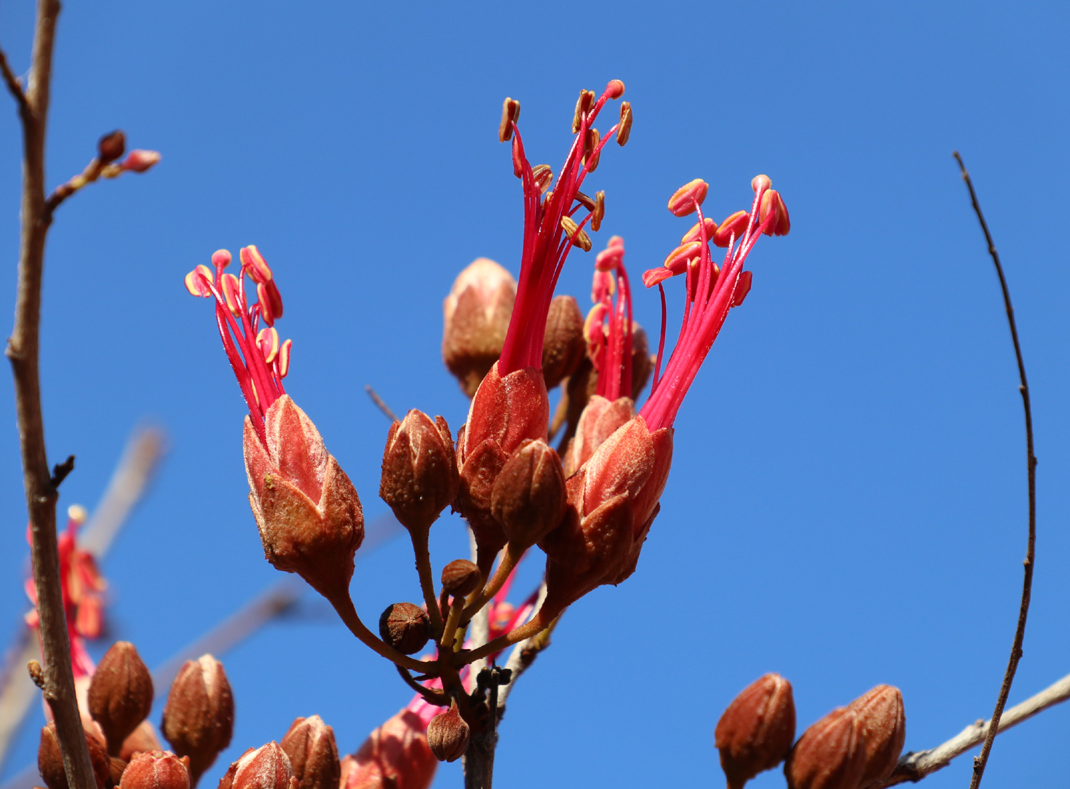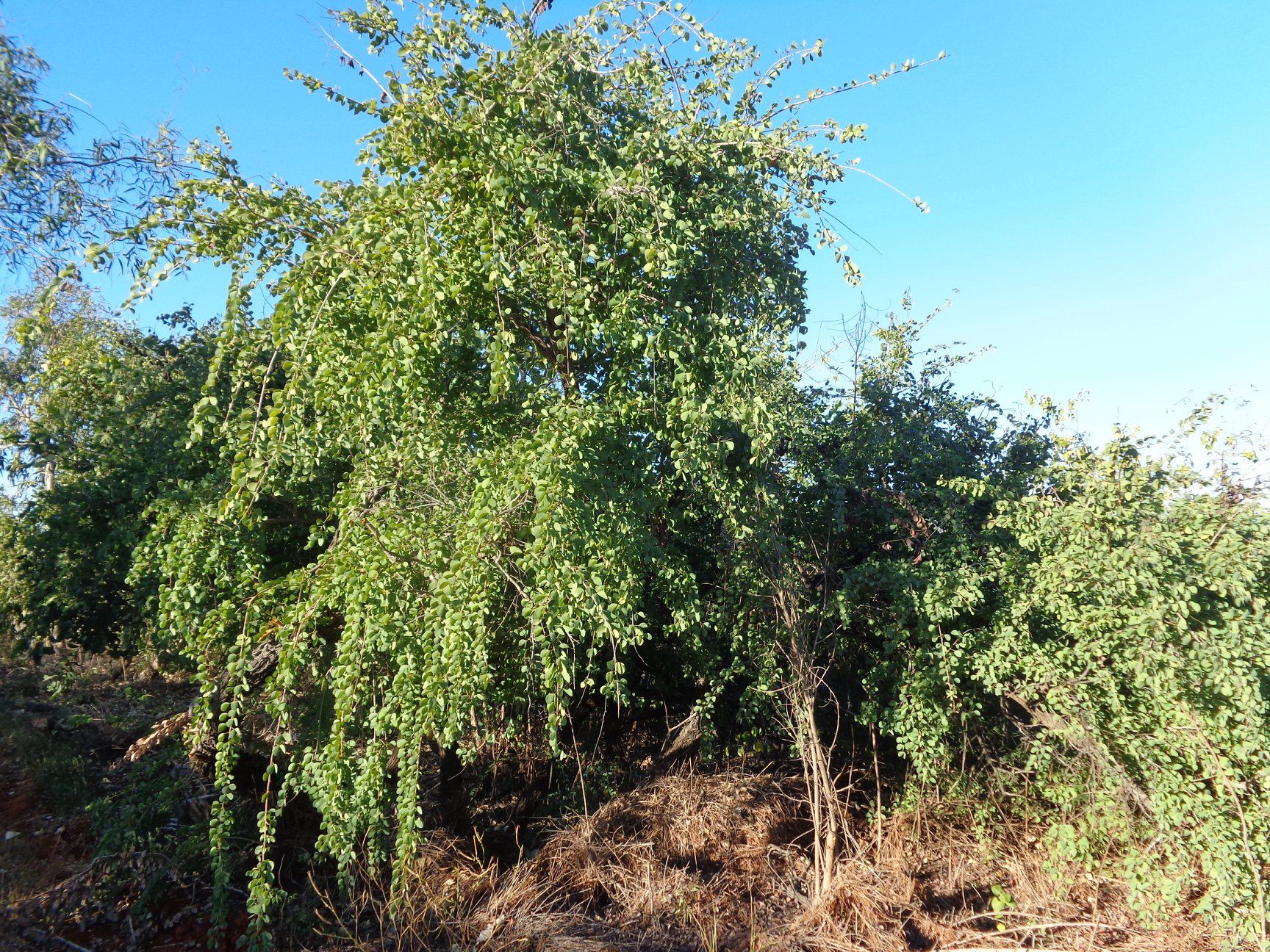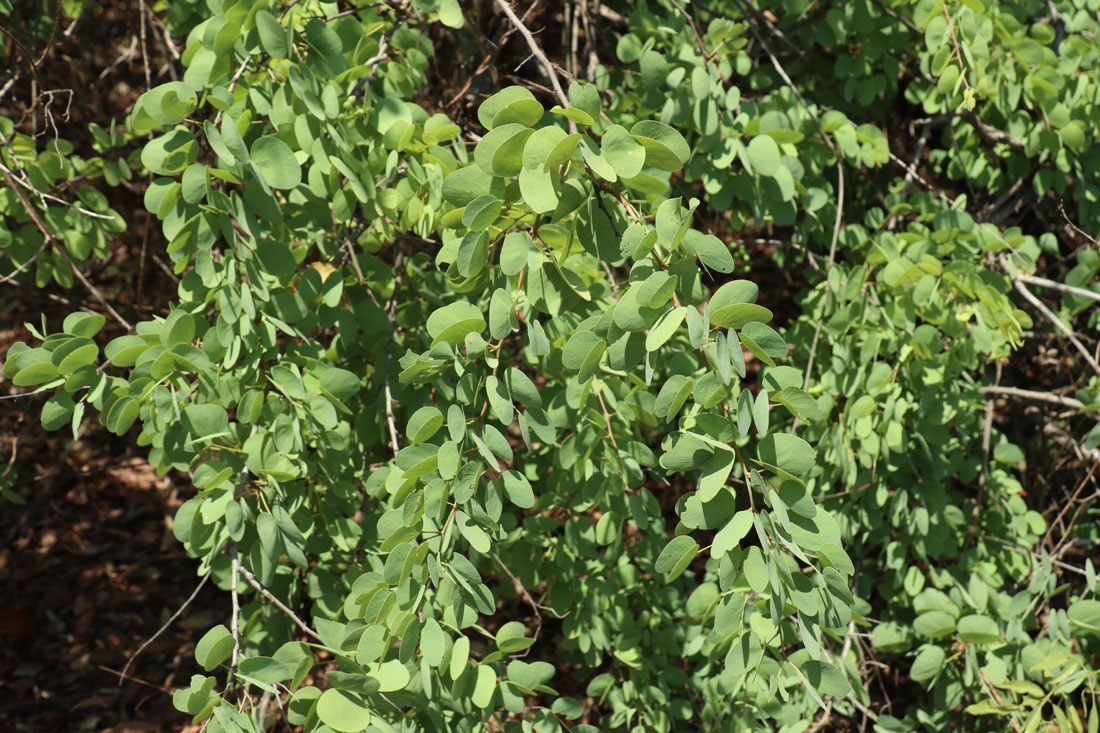Lysiphyllum Cunninghamii
![]()
Photo bk (late July) |
(Photo courtesy Des Harris) |
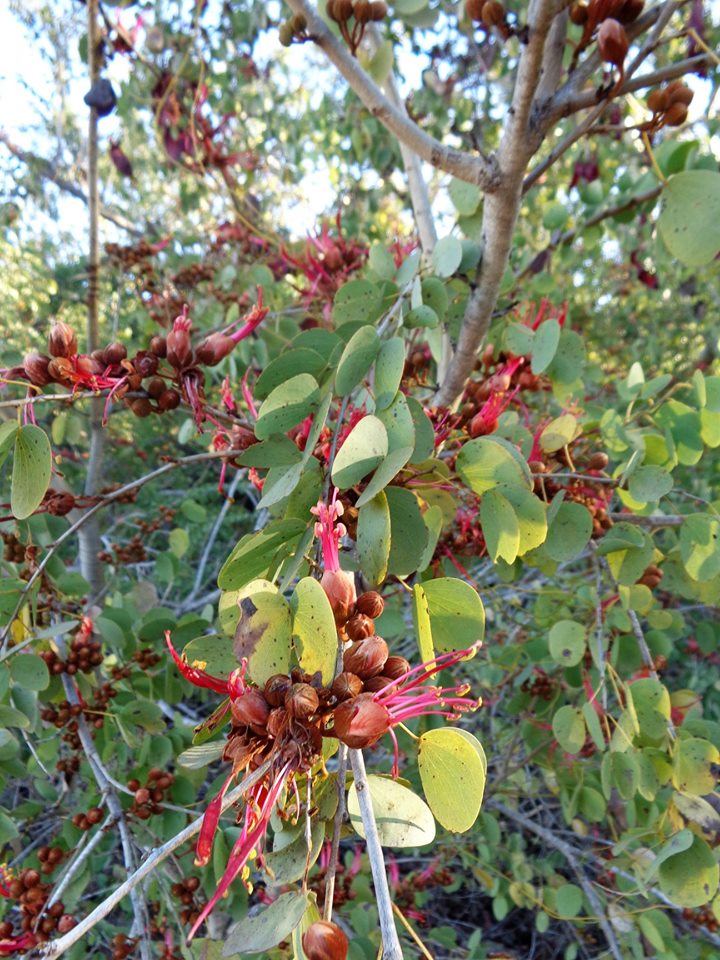
|
|
Flowers in July |
(photos courtesy Des Harris) |
LYSIPHYLLUM CUNNINGHAMII.
Lysis, setting free. Phyllon, leaf, referring to two distict leaflets.
Cunningham, an early Australian botanical collector,
Common name: Bauhinia.
Aboriginal name: Jigal tree.
(Photo: BK Oct 6th 2024) |
The "butterfly wing" positioning of the leaves ie, back to back. Gives
rise to the aboriginal name of " jigul’ from a custom in which a man
can’t directly face his mother-in-law.
Uses: the sap when dry can be mixed with nectar forming a chewy gum
Likened to "TURISH DELIGHT".
Ash from wood mixed with chewing tobacco.
Honey-sucker tree, Bauhinia, Jigal Tree = Apr-Aug
LYSIPHYLLUM CUNNINGHAMIL = Nov-Jan
~ Sweet nectar in flower cups can be mixed with gum to make "Turkish
Delight".
~ Leaves are back to back, like an Aboriginal man and his mother_
in-law who must never face each other ( a " jigal " relationship ).
~ Leaves can be chewed with native tobacco.
~ Native bees (" munga fly ") love to nest in this tree.
LOCAL PLANTS
BAUHINIA
Lysiphyllum Cunninghamii (Bauhinia) is quite widely distributed around the Broome district.
The trees are up to six metres tall with dark, coarsely flaking bark. The leaves have two lobes which are joined like a butterfly’s wings. This back-to-back positioning of the leaves gives rise to the Aboriginal name for this tree – "Jiggle" tree. Jiggle means mother-in-law and according to Aboriginal custom, mother-in-law and son-in-law must not directly face each other.
The seed pods are large and reddish brown, becoming darker as they mature. The flowers are bright red and full of nectar, making it a popular tree with honeyeaters.
Another name given to this tree is "Turkish Delight" because the sap, when dry, forms a chewy gum which when eaten with the nectar resembles this sweet.
The Bauhinia trees flowers spasmodically between April and August and fruits appear between November and January.
It makes an ideal shade tree and is used for nesting in by native bees. The ash is used to mix with native chewing tobacco.
One of the most interesting and attracting trees of the tropical woodlands surrounding Broome is the native Bauhinia or Jigil tree.
Also known as jeekal or jikirl, its scientific name is Lysiphyllum cunninghamii.
A medium-sized tree, usually with a short, stout trunk, its outer branches hang down giving it a characteristic weeping appearance.
At the moment many of the local bauhinias are thick with distinctive red flowers – small petals protruding from a velvety cup, often overflowing with sweet nectar.
The leaves of the Bauhinia are its most distinctive feature. Each consists of a paired leaflet resembling a butterfly. They are high in protein and are relished by many grazing animals, especially cattle.
New flushes of leaf produce a colourful display of red and pink, while the way the leaflets face away from each other has prompted Aboriginal people to call it the "mother-in-law" or jigil tree. This is because of the tribal tradition that a man and his mother-in-law should not look at or interact with each other.
Bauhinias are often found scattered among eucalypts ranging from dense woodlands to open grasslands.
Tim Willing of the Broome Botanical Society said they have one of the widest range of habitats of all the trees of the Kimberley, doing well on black soil, sand, stony ground, along watercourses as well as pindan.
They produce excellent firewood, which burns hot, and with little smoke, and the gum which is often found oozing from the trunk and branches is sweet and chewy.
Their dense weeping form makes them a popular shelter tree for wallabies and other animals during the heat of the day and their hollowed out limbs are a favourite nesting site for bush honey bees.
Unlike eucalypts which often have a sterile area, void of other plants beneath them, bauhinias allow other shrubs and grasses to grow happily in the mulch-enriched ground beneath their canopy.
Bauhinias can be cultivated from seed and adapt well to the low water garden. They can be encouraged with drip irrigation in their early stages, and when established can be left to their own devices.
Lysiphyllum cunninghamii: Kimberley Bauhinia or Jigal Tree
Dense shrub or semi-deciduous tree to 6 m; bark dark grey, rough; young leaves flushed red becoming soft green or yellowish green; mature leaves bluish grey to dull greyish green, butterfly-shaped; flowers red, some what tubular, nectar rich; pods large, pendulous, flat, reddish, somewhat papery, twisted.
Common with Acacia tumida on sandplain and in pindan, Lombadina, Cape Bertholet, One Arm Point and Broome. Exhibits a wide ecological tolerance throughout the Peninsula and the rest of the Kimberley. Also occurs in NT and Qld.
Bardi name = jigal or joomoo. Edible gum which is very sweet; nectar sucked from flowers; an excellent smokeless firewood; branches used in constructing windbreaks. The back-to-back positioning of the leaves gives rise to the Aboriginal common name jigal for this tree. Jigal means mother-in-law, but more, the relationship involving mother-in-law. According to Aboriginal custom, mother-in-law and son-in-law must not directly face each other.
A Broome speciman was described by Hochreutiner in 1925 as Bauhinia hookeri var. broomemensis. The leaves are favoured by stock and are reported to be nutritious.
Flowering April-October; fruiting September, November, December.
Is quite widely distributed
around the Broome district.
The trees are up to six metres tall with dark, coarsely
flaking bark. The leaves have two lobes which are
joined like a butterfly’s wings. This back-to-back
positioning of the leaves gives rise to the Aboriginal
name for this tree–"jiggle"tree. Jiggle means mother-
in-law and according to Aboriginal custom, mother-
in-law and son-in-law must not directly face each
other.
The seed pods are large and reddish brown, becoming
darker as they mature. The flowers are bright red
and full of nectar, making it a popular tree with honey-
eaters.
Another name given to this tree is "Turkish Delight"
Because the sap, when dry, formes a chewy gum which
When eaten with the nectar resembles this sweet.
The Bauhinia trees flowers spasmodically
Between
April and August and fruits appear between November
And January.
It makes an ideal shade tree and is used for nesting
In by native bees. The ash to mix with native
Chewing tobacco.

(new growth in August because of the heavy dew at this time of the year)
Lysiphyllum cunninghamii
Kimberley Bauhinia or Jigal Tree.
Dense shrub or semi-deciduous tree to 6m; bark grey, rough;
Young leaves flushed red becoming soft green or yellowish green; mature
Leaves bluish grey to dull greyish green, butterfly-shaped; flowers red, some-
What tubular, nectar rich; pods large, pendulous, flat,reddish, somewhat
Papery, twisted.
Common with Acacia tumida on sandplain
and in pindan, Lombadina,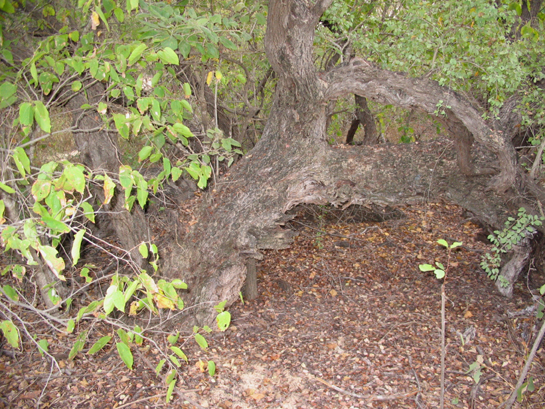
(Here is an old, huge Jigul tree)
Cape Bertholet, One Arm Point and Broome. Exhibits a wide ecological
Tolerance throughout the Peninsuia and the rest of the Kimberley. Also occrs in NT and Old.
Bardi name = jigal or joomoo. . Edible gum which is very sweet; nectar
Suked from flowers; an excellent smokeless fire wood; branches used in
Constructing windbreaks.
The back-to-back positioning of the leaves gives rise to the Aboriginal common name jigal for this tree. Jigal means mother in-law, but more, the relationship involving mother-in-law. According to Aboriginal custom, mother-in-law must not directly face each other.
A Broome specimen was described by Hochreutiner in 1925 as Bauhinia hookeri var. broomensis. The leaves are favoured by stock and are reported to be nutritious.
Flowering April-October; fruiting September,November, December.
December.
A LOCAL native, the bauhinia or jigal tree, is relished by many grazing animals.
One of the most interesting and attractive trees of the tropical woodlands surrounding Broome is the native bauhinia or jigal tree.
Also known as jeekal or jirl, it’s scienctific name is Lysiphyllum Cunninghamii.
|
|
|
|
